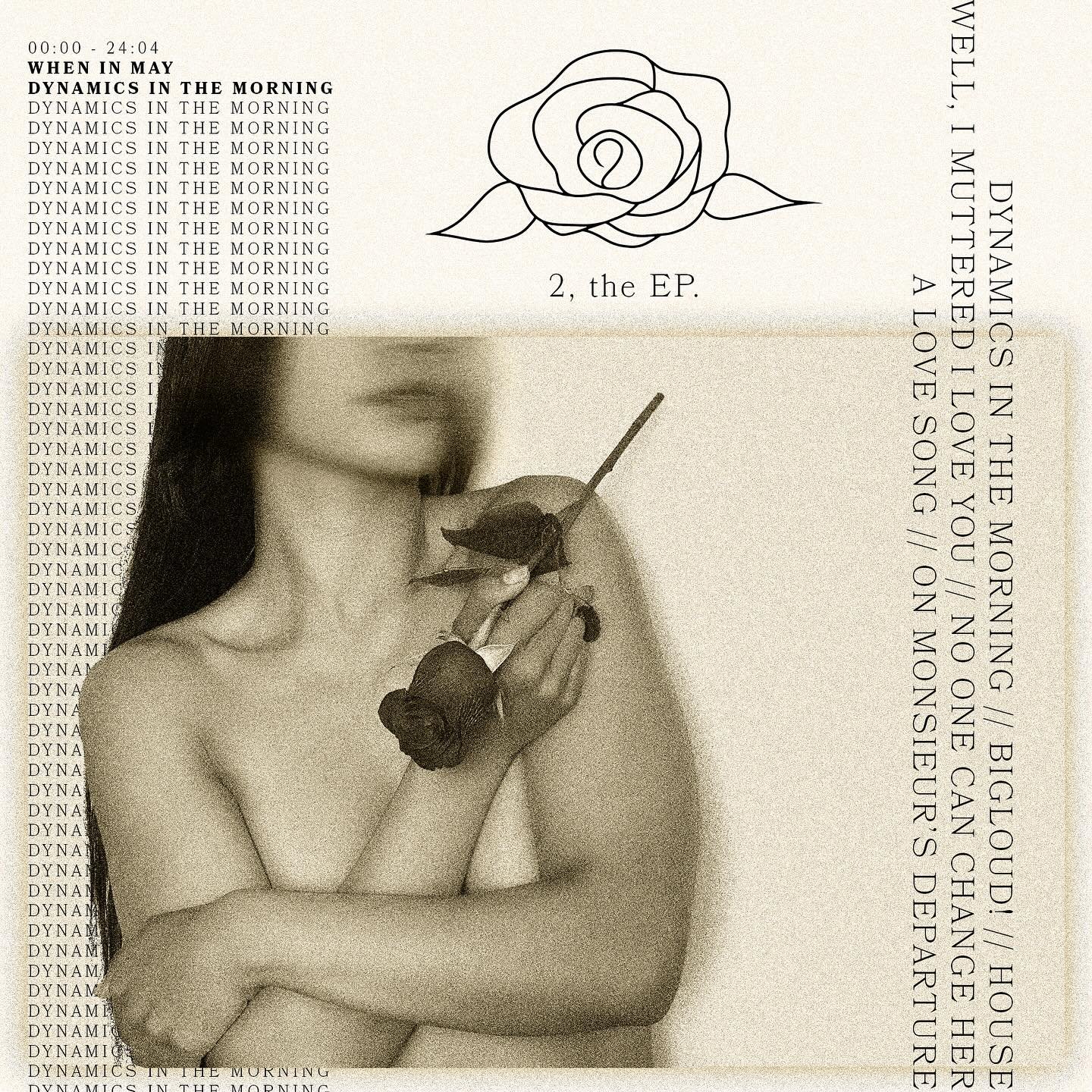Hi! Your sophomore EP Dynamics In The Morning is described as ‘multi-genre’—incorporating shoegaze, pop rock, indie rock, jazz, pop punk, and contemporary orchestra. How did you choose which genres to blend, and which track best represents that stylistic mix?
A: The process is quite boring actually.
When heading into as you would say “season 2,” I wanted to be bold and brave.
Giving fans some of what they expected to see following EP 1 before tackling the unknown. The tracks I personally believe resemble that remark are self titled “Dynamics In The Morning” & “Well, I Muttered I Love You.”
Your debut EP, Lying About Silly Things, hit over 100k listeners across 90+ countries. How did that reception influence the creative approach you took on Dynamics In The Morning?
A: Never once did I plan on making music to be heard. I was more or less making the sound track to the movie that is my youth.
So in being able to make a sequel, I made it clear to myself that to whoever hears my songs, it is your turn.
It’s your movie and your songs now.
I showcased the more embarrassing sides of myself and experiences through this EP.
The lead singer Brett Fitzpatrick is praised for his witty, metaphor-rich lyrics—what lyrical themes did Brett explore on this EP, especially compared to the debut?
A: I explored themes of pure heartbreak in many forms. From lustful weeks, short term love, and then finally the girl who got away.
Some of my favorite lyrics from this EP are from the song “Well, I Muttered I Love You.”
“Yoshed in my mouth” comes from a drug-infested kiss and throwing up while sharing such a moment. A bit silly but very earnest.
Then the track “House,” “monochrome pictures of me and you line the walls in my hall” which comes the enrichment of young love fulfilled.
The EP features a title track that’s almost five minutes long. What was the vision behind its structure and progression?
A: Dynamics In The Morning isn’t just the title of the track and EP.
It’s a sentiment to how I’m able to get up each morning. To earn my sunset to make waking up easier for the following morning.
This track came from a place of wanting to go deep into the woods and either ending it all or burning and shedding any memories of my past life and then running far away.
Songs like ‘Bigloud!’ and ‘House E’ suggest intriguing narratives—can you share the stories or ideas behind these uniquely named tracks?
A: “Bigloud” has always been a funny inside joke with my childhood friend. I’ve always been very fond of attractive women who tend to be firecrackers. No such thing as a small, quiet explosion.
So the girl in this story was such an explosion, you could only refer to it as “Big” & “Loud,” cheesy, corny and silly. But very much youthful banter between close friends describing a not so emotionally mature relationship.
“House” is about a girl I met in my early twenties. We shared everything together, took mundane photos, dreamt of a house together. It describes both messing up enough but yet to still be so in love.
The song is very much an “anti anti-love song.” The most perfect woman had just ruined my bachelor era and I was okay with it.
Unfortunately after writing and recording, the pictures had to come off my wall.
Jazz and contemporary orchestral elements suggest nuanced production choices. How did you translate those ideas into real arrangements?
A: We wrote those songs for live performance.
And they weren’t easy considering we just make racket with the toys we’ve been playing with forever. So one day I had an idea.
We’ve been placed between some incredible acts and we wanted to let you know why we are deserving of your attention as well. We have a start, middle and grand finish just like all the other videos around. And we believe like every great act, orchestra signals our departure from the stage.
From ‘No One Can Change Her’ to ‘A Love Song’, there’s a strong emotional focus. How do you balance vulnerability and strength in your songwriting?
A: “No One Can Change Her” and “A Love Song” refer to the same girl but at different stages of the breakup.
“No One Can Change Her” comes from a place of insecurity of being in an open relationship. It felt like my partner was in competition with me rather than with me at times.
“A Love Song” is my worst nightmare coming true. The love of my life getting married to someone else, happier than I could ever make her.
I would be left asking if I’m even missed just even a little. Unfortunately I think I know the answer but refuse to say it out loud.
So long story short, it wasn’t a balance. It was pure emotion and I didn’t care how it made me look as a person or artist.
I hope she got to hear it and know I’ll always miss her.
At just over 24 minutes for 7 tracks, how did you arrive at that ideal runtime—was brevity part of the creative concept?
A: People say it’s a bit long for an EP.
And to them I say, “if 24 minutes is a long time I feel horrible for your wife and she should come see the band live in living color.”
If you aren’t doing something that scares you then you aren’t living. Because fear rules everything. It makes or breaks you. I’m choosing to embrace not being normal.
Comparing Lying About Silly Things and Dynamics In The Morning, how has the evolution of your sound reflected your growth as a band?
A: When In May’s logo is a beautiful rose and no rose is the same. Each one is both beautiful but different.
There was more challenge and obstacles with Dynamics In The Morning, but Lying About Silly Things has more found memories within the EP.
I suppose you could say the growth you’ll see and most definitely hear is undeniable perseverance.
What’s next for When In May—are you planning a tour, music videos, or your next full-length release to continue building on this new era?
A: When In May as a whole are working on music videos, live performance recording and currently ruminating on celebrity affairs as material for our next extended play.
Listening to songs so you don’t have to! Just kidding :D, you totally should. Music blogger by day, nurse by night





